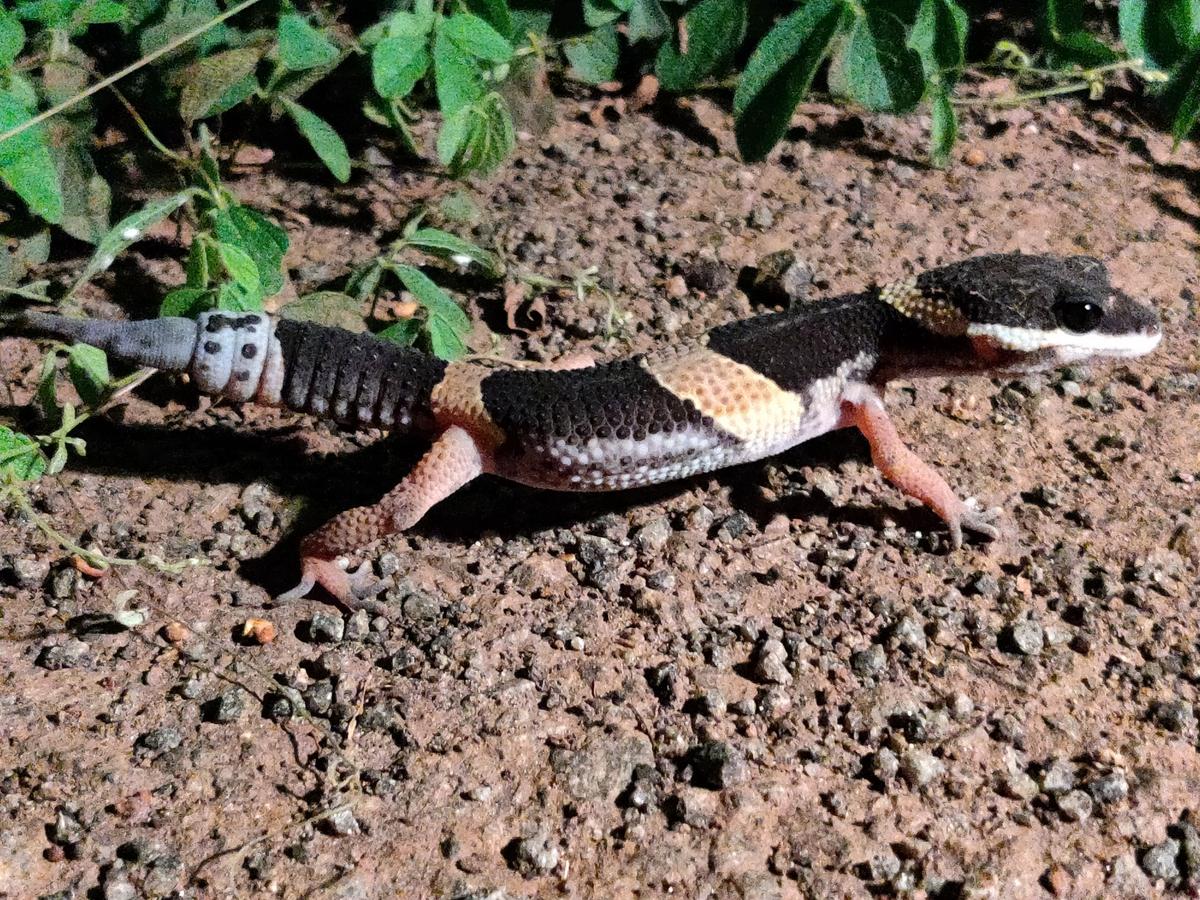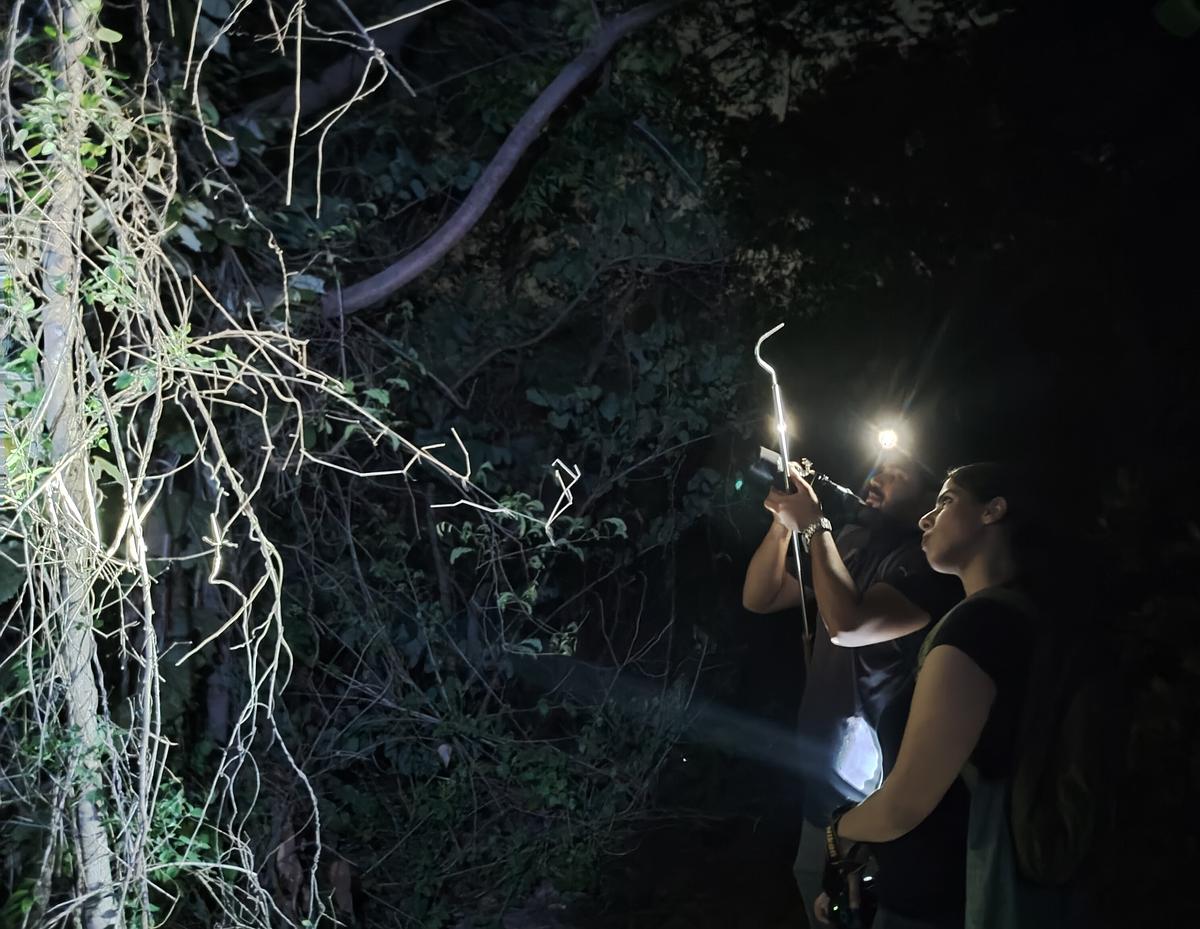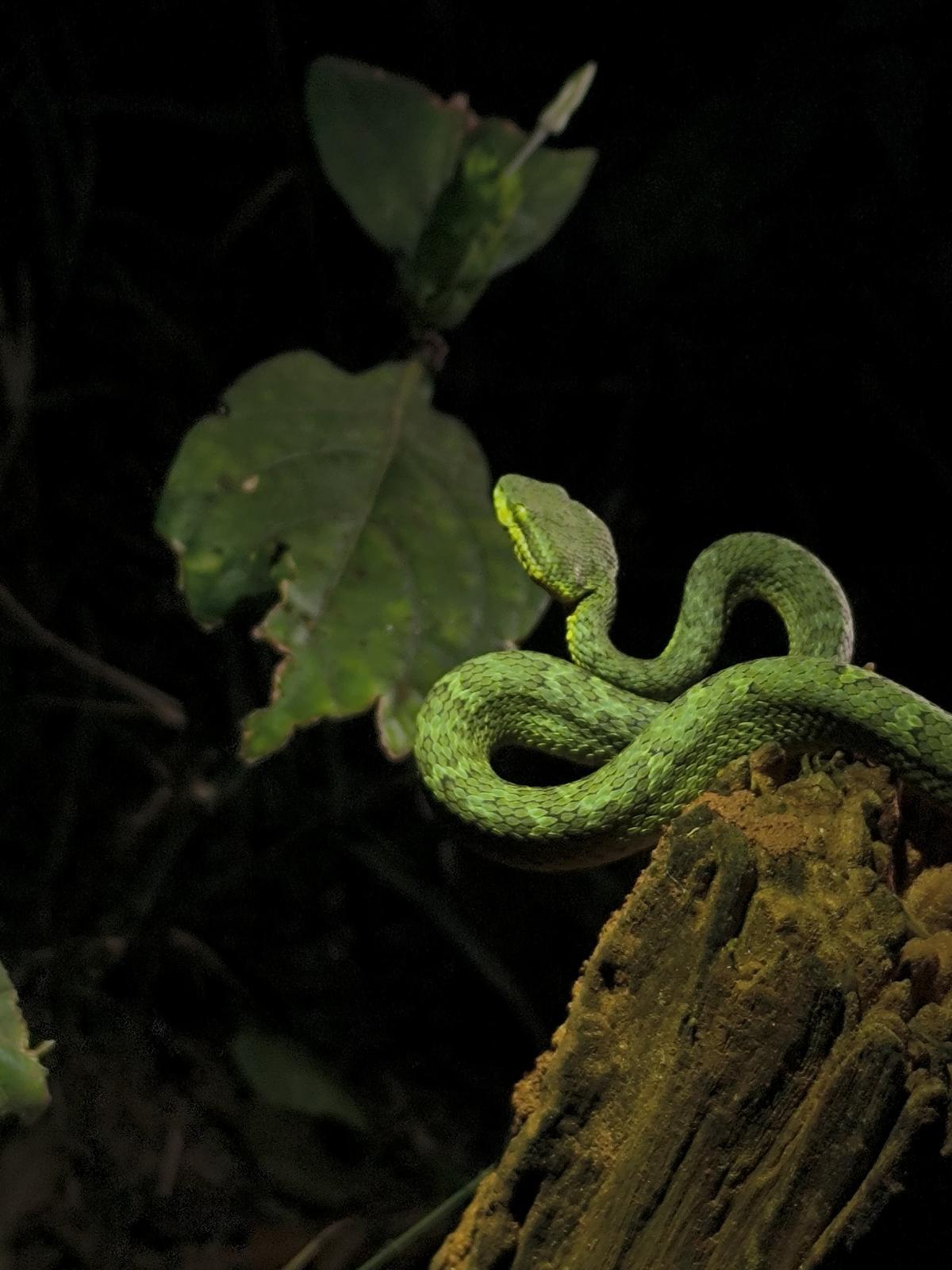The silence of the night is broken by the soughing of trees in the breeze. Armed with flashlights, cameras, and curious minds, a group of about 15 members, led by Nature educators, embark on a trail to explore the unknown in the Eastern Ghats near Kambalakonda forests in Visakhapatnam.
The first herp walk of the season has just begun when the group spots the Brahminy blind snake on the edge of a leaf litter. One of the world’s smallest snakes, this one – although common – is rarely seen. As research scientist of Kambalakonda Yagnapathy Adari lights it up with his torchlight, the non-venomous snake zigzags into the soil. The snake can be as small as a shoe lace and is probably the second smallest snake in the world behind the Barbados thread snake. “This is a rare sight as these snakes are barely visible on land as they are burrowers, mostly living in underground tunnels and emerging at dusk. One truly weird thing about the Brahminy blind snake is that all of them are female,” explains Yagnapathy as he carefully shifts the torch away.
The night is wrapped in a muddle of distant sounds – the rhythmic croaking of frogs, the rustling of leaves, the quavering call of the nightjar and the occasional hoot of an owl. Venturing deeper into the trek route, the two guides leading the group explain how these sounds are part of the intricate communication system of the forest’s nocturnal inhabitants. In the next two hours, the group discovers many hidden inhabitants of the diverse biodiversity of the region: the wolf spider with spiderlings, the elusive Indian clouded gecko, speckled forest skink and firefly nymph gearing up to make its way to light the night sky.
Participants during a herp walk in Eastern Ghats in Visakhapatnam.
| Photo Credit:
SPECIAL ARRANGEMENT
Organised by Wildlife Conservation Through Research and Education (WCTRE) and Andhra Pradesh Forest Department, the herp walk held earlier this month kickstarted a series of such events in Visakhapatnam that marks the arrival of the monsoon months, known to be the best time to view the diverse herpetofauna of the region.
The Eastern Ghats range, with its unique biodiversity, is a haven for herpetology enthusiasts. In the past two years, herp walks — that are guided tours focused on finding and studying reptiles and amphibians — have become increasingly popular here and offer a unique window into the nocturnal world.
New records
“Among the best locations for herp walks is the Simhachalam Hills. These hill ranges are representative of a very active, vital habitat type amidst the city chaos,” says Vivek Rathod of WCTRE. A recent study recorded the presence of a total of 40 species of reptiles in these hills. But naturalists say a lot more surprises are waiting to be discovered.

A painted leopard gecko (Eublepharis pictus) recorded from northern Eastern Ghats in Visakhapatnam.
| Photo Credit:
SPECIAL ARRANGEMENT
In 2022, a new species of gecko called the painted leopard gecko (Eublepharis pictus) was recorded from this part of the northern Eastern Ghats by scientist Zeeshan Mirza and Ch Gnaneswar during one of the herp walks. Among other significant herpetological findings from the region was the first-ever sighting of the elusive Barkudia limbless skink (Barkudia melanostica) at the Kambalakonda Wildlife Sanctuary in May 2023 by the AP Forest Department. “This region is a combination of multiple habitats like terrestrial, arboreal, aquatic and fossorial (ground-dwelling), which make it a very interesting ecosystem of herpetofauna,” says Yagnapathy, who has done research on creating baseline data of snakes and reptiles of Simhachalam hills and Kambalakonda Wildlife Sanctuary along with their systematics and natural history.
An Indian hare spotted during herp walks in Visakhapatnam.
| Photo Credit:
SPECIAL ARRANGEMENT
Some of the best locations for herp walks in Visakhapatnam are the periphery of Kambalakonda, Shambhuvanipalem, Gambheeram Reservoir, the back-end of Mudasarlova Reservoir, Simhachalam Hills, Yarada and Yendada Hills. The walks typically begin at dusk along predetermined paths where participants are led by experienced herpetologists or naturalists who can identify species and provide insights into their behaviour, ecology, and conservation status.
Some of the common sightings in and around these areas include termite hill gecko, spotted house gecko, ant eating spiders, black scorpion, painted balloon frog, narrow mouther frog, bronze back tree snake, bamboo pit viper, Indian palm civet, Indian flapshell turtles, Indian Skipper frog among others.
Vimal Raj, who conducts herp walks regularly as part of the activities conducted by his Nature education group Wilded, reiterates that Simhachalam never fails to spring up a surprise during every herp walk.

Participants exploring the fauna of Simhachalam Hills during a herp walk in Visakhapatnam.
| Photo Credit:
Special Arrangement
Two weeks ago when Vimal embarked on the three-kilometre herping trail leading a group, he had not walked far when they had their first sighting of the season and a fascinating one: a group of 11 tiny, green baby chameleons perched on a tree. “They were as tiny as the size of thumb and would have just hatched as they huddled close to each other,” says Vimal. According to him, these walks help bust myths about the herpetofauna world.

Common bamboo viper spotted during a herp walk in Visakhapatnam.
| Photo Credit:
SPECIAL ARRANGEMENT
For instance, contrary to popular depictions where chameleons are shown as flawlessly blending into their surroundings, real-life colour changes serve various purposes. “Camouflaging is just one aspect of it; chameleons alter their colour to defend territory, or attract mates,” he adds. Similarly, there is a myth that green vine snakes can bore holes into people’s heads with their bites. “This is not true. Green vine snakes are actually back-fanged snakes with mild venom that they use to subdue their prey, which are usually small birds and lizards. Their bites are rarely fatal to humans,” explains Vimal about this often misunderstood species.
Herp walks are not just about sightings but also about understanding the delicate interplay of life in the forest. “It’s an experience that engages all your senses – you are looking around for patterns, you listen to calls, soak in the sight and smell of an ecosystem that thrives in the dark. It’s a night walk that leaves you with a deeper appreciation for the often overlooked wonders of the natural world,” adds Vimal.



